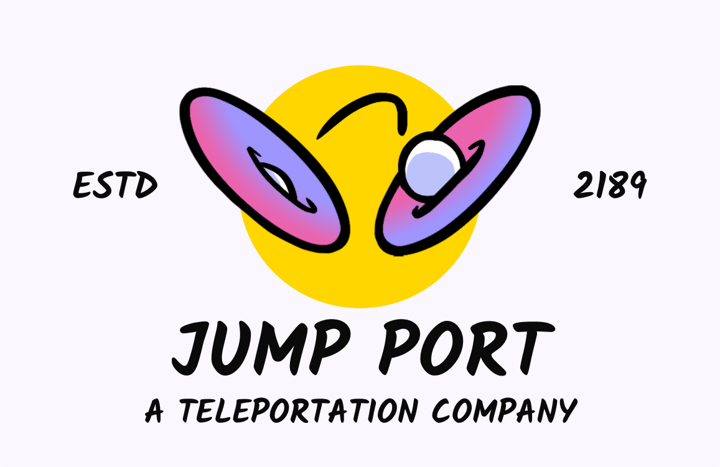Harness the Power of Text Mining for Business Intelligence
Text mining is a fascinating field that involves an in-depth analysis of textual data to extract valuable insights and knowledge. In today’s digital age, where information is constantly being generated and shared, text mining has become an essential tool for businesses and researchers alike. Whether it’s understanding customer sentiment, extracting relevant information from large datasets, or detecting fraudulent activities, text mining has a wide range of applications. In this ultimate guide, we will explore the world of text mining, its key techniques, its applications, and the steps involved in the text mining process.
🔩 The Nuts and Bolts:
- Text Mining Extracts Valuable Information from Unstructured Data: By analyzing textual data from sources like documents and social media, organizations can uncover hidden patterns, trends, and insights that drive informed decision-making.
- Natural Language Processing Enhances Text Mining Accuracy: Techniques such as parsing, part-of-speech tagging, and sentiment analysis enable computers to understand and interpret human language, making text mining more accurate and insightful.
- Text Mining Optimizes Business Processes and Customer Satisfaction: By analyzing customer feedback and social media posts, businesses can identify common themes, sentiment, and specific issues, leading to improved product design and enhanced customer satisfaction.
- Key Techniques in Text Mining Include Information Retrieval and Data Mining: Methods such as keyword-based searches, document clustering, and association rule mining help retrieve relevant information and uncover patterns within large datasets.
- Text Mining Plays a Crucial Role in Security and Fraud Detection: By analyzing text data from sources like emails and transaction records, organizations can identify suspicious patterns and take proactive measures to prevent security breaches and fraud.
- Text Mining Involves Several Crucial Steps: The process includes text acquisition, preprocessing, transformation, pattern discovery, and evaluation, each essential for extracting valuable insights from textual data.
- Text Mining Supports Various Industries Beyond Business Intelligence: Applications extend to healthcare for analyzing medical records and patient feedback, aiding in disease prevalence studies, treatment outcomes analysis, and epidemic prediction.
Understanding Text Mining
Before we dive into the specifics, let’s first understand what text mining is and why it is important. Text mining, also known as text analytics, is the process of extracting useful information and knowledge from unstructured textual data. It involves techniques from various disciplines such as linguistics, computer science, and data mining. By analyzing and interpreting text, we can uncover hidden patterns, trends, and insights that can lead to informed decision-making.
Definition and Importance of Text Mining
Text mining involves extracting valuable information from vast amounts of textual data, ranging from documents, emails, social media posts, and more. It goes beyond simple keyword-based searches and focuses on understanding the context, sentiment, and relationships within the text. In today’s information-driven society, organizations can gain a competitive advantage by harnessing the power of text mining to drive innovation, improve customer satisfaction, and optimize business processes.
How Text Mining Works
Text mining employs a combination of techniques such as information retrieval, natural language processing (NLP), and data mining to extract insights from textual data. It starts by collecting and preprocessing the text, removing any noise or irrelevant information. Next, the text is transformed into a structured format that can be analyzed. Through techniques such as pattern discovery, statistical analysis, and machine learning algorithms, patterns and relationships within the text are identified and analyzed.
One of the key challenges in text mining is dealing with the vast amount of unstructured textual data that is generated every day. With the advent of social media platforms, blogs, and online forums, the volume of text available for analysis has grown exponentially. Text mining techniques allow organizations to sift through this massive amount of data and extract valuable insights.
For example, imagine a company that wants to understand customer sentiment towards their products. By analyzing customer reviews, social media posts, and support tickets, text mining can help identify common themes, positive or negative sentiment, and specific issues that customers are facing. This information can then be used to improve product design, address customer concerns, and enhance overall customer satisfaction.
Furthermore, text mining can also be used in the field of healthcare to analyze medical records, research papers, and patient feedback. By applying text mining techniques, researchers can identify patterns in disease prevalence, analyze treatment outcomes, and even predict potential epidemics. This can greatly aid in the development of personalized medicine and improve patient care.
Build something your buyers *truly* want
Subscribe to Closing the Gap—a newsletter to help makers and doers get closer to customers. Learn more.
We believe in protecting your data. Here’s our Privacy Policy.
Key Techniques in Text Mining
Text mining encompasses various techniques that enable the extraction of meaningful information from text. Let’s explore some of the key techniques:
Information Retrieval
Information retrieval is the process of retrieving relevant information from a large collection of text. It involves techniques such as keyword-based searches, document clustering, and query expansion. By effectively retrieving information, organizations can quickly access the most relevant data for analysis and decision-making.
Keyword-based searches involve matching user-entered keywords with the content of documents to retrieve relevant information. Document clustering is a technique that groups similar documents together based on their content, making it easier to navigate through large volumes of text. Query expansion is the process of reformulating a user’s query to retrieve more relevant results, enhancing the search experience.
Natural Language Processing
Natural language processing is a subfield of artificial intelligence that focuses on the interaction between humans and computers through natural language. It involves techniques such as parsing, part-of-speech tagging, named entity recognition, and sentiment analysis. NLP enables computers to understand and interpret human language, making text mining more accurate and insightful.
Parsing is the process of analyzing the grammatical structure of sentences to extract meaning from them. Part-of-speech tagging involves labeling words in a sentence with their corresponding part of speech, such as nouns, verbs, adjectives, etc. Named entity recognition identifies and classifies named entities in text, such as names of people, organizations, and locations. Sentiment analysis determines the sentiment or emotion expressed in a piece of text, providing valuable insights for businesses to understand customer opinions and feedback.
Data Mining
Data mining involves discovering patterns and relationships within large datasets. In the context of text mining, data mining techniques are applied to textual data to uncover hidden patterns, trends, and associations. By identifying these patterns, organizations can gain valuable insights into customer behavior, market trends, and more.
Text mining utilizes data mining techniques such as association rule mining, clustering, and classification to extract valuable information from unstructured text data. Association rule mining identifies relationships between words or phrases in text, revealing frequent patterns that can be used for various applications. Clustering groups similar documents together based on their content, enabling organizations to organize and categorize text data efficiently. Classification categorizes text documents into predefined classes or categories, allowing for automated text categorization and information retrieval.
UX Research Methods
Text Mining Applications
Text mining has a wide range of applications across various industries. Let’s explore some of the key applications:
Business Intelligence
Text mining enables organizations to gain deep insights into customer preferences, market trends, and competitor analysis. By analyzing customer feedback, social media posts, and other textual data, businesses can make informed decisions and develop strategies to enhance customer satisfaction and drive business growth.
Moreover, text mining can help businesses identify emerging market trends and consumer preferences by analyzing large volumes of unstructured text data. This can provide valuable insights for product development, marketing campaigns, and overall business strategy.
Security and Fraud Detection
Text mining plays a crucial role in detecting security threats and fraudulent activities. By analyzing text data from sources such as emails, chat logs, and transaction records, organizations can identify suspicious patterns and take proactive measures to prevent security breaches and financial fraud.
In addition to detecting external threats, text mining can also be used for internal security measures. By monitoring employee communications and analyzing text data for anomalies, organizations can prevent data breaches and unauthorized access to sensitive information.
Sentiment Analysis
Sentiment analysis, also known as opinion mining, involves determining the sentiment or emotion expressed in a piece of text. It can be applied to social media posts, customer reviews, or feedback to gauge customer satisfaction and sentiment towards products or services. By analyzing sentiment, organizations can understand customer perceptions and make improvements accordingly.
Furthermore, sentiment analysis can help businesses track the effectiveness of their marketing campaigns and brand reputation. By analyzing the sentiment of online conversations and reviews, organizations can tailor their messaging to better resonate with their target audience and address any negative feedback promptly.
🚀 If you’re using Helio
Track sentiment analysis to help understand the effectiveness of your marketing.

Understand customer perceptions and make improvements accordingly.
Steps in Text Mining Process
The text mining process involves several steps, each of which is crucial for extracting valuable insights. Let’s look at the key steps involved:
Text Acquisition
The first step in the text mining process is acquiring the textual data. This can involve collecting data from various sources such as websites, social media platforms, or internal databases. The data can be in the form of documents, emails, or any other textual format.
For example, imagine a company that wants to analyze customer feedback from social media platforms. They would use web scraping techniques to gather posts, comments, and reviews related to their products or services. By acquiring this textual data, the company can gain a comprehensive understanding of customer sentiment and identify areas for improvement.
Text Preprocessing
Text preprocessing is an essential step where the collected data is cleaned and transformed into a usable format. This involves removing any noise or irrelevant information, such as punctuation, special characters, and stopwords. Additionally, techniques like stemming and lemmatization can be applied to normalize the text.
Continuing with the previous example, during the text preprocessing step, the company would remove hashtags, emojis, and URLs from the social media posts. They would also eliminate common words like “the,” “and,” or “is” that do not contribute much to the overall meaning. By cleaning and normalizing the text, the company ensures that the subsequent analysis is based on relevant and meaningful information.
Text Transformation
Text transformation involves converting the preprocessed text into a structured format that can be analyzed. This often includes techniques such as term frequency-inverse document frequency (TF-IDF) weighting, where each term is assigned a weight based on its importance in the document collection.
Building on the previous example, the company would apply TF-IDF weighting to assign higher importance to terms that are rare across all the social media posts but frequent within a specific post. This way, they can identify key topics or themes that are being discussed by customers. By transforming the text into a structured format, the company can effectively analyze and extract meaningful insights from the textual data.
Pattern Discovery
Pattern discovery is the core of the text mining process. It involves identifying patterns, trends, and associations within the textual data. This can be done through techniques such as clustering, topic modeling, or association rule mining. By discovering these patterns, organizations can gain valuable insights and make informed decisions.
Continuing with the previous example, the company would use clustering techniques to group similar social media posts together based on their content. This would allow them to identify different customer segments or personas and understand their specific needs and preferences. By discovering these patterns, the company can tailor their products or services to better meet customer expectations.
Evaluation and Interpretation
Once patterns are discovered, they need to be evaluated and interpreted. This involves analyzing the results, understanding their significance, and drawing conclusions. Visualization techniques can be used to present the findings in a meaningful way, making it easier to communicate the insights to stakeholders.
Expanding on the previous example, the company would analyze the clustered groups of social media posts to evaluate customer sentiment and identify areas of improvement. They would interpret the results by looking at the most common topics or keywords within each cluster. Visualization techniques, such as word clouds or bar charts, can be used to present these findings in a visually appealing and easily understandable manner.
In conclusion, text mining is a powerful tool that enables organizations to extract valuable insights from textual data. By understanding the key techniques, applications, and steps involved in the text mining process, businesses can leverage this technology to drive innovation, improve customer satisfaction, and gain a competitive edge in today’s data-driven world.
Text Mining FAQs
Text mining, also known as text analytics, is the process of extracting useful information and knowledge from unstructured textual data. It involves techniques from linguistics, computer science, and data mining to uncover patterns, trends, and insights from text.
Text mining is crucial because it helps organizations make sense of vast amounts of unstructured data, such as documents, emails, and social media posts. By analyzing this data, businesses can gain valuable insights, improve decision-making, enhance customer satisfaction, and optimize business processes.
Text mining employs techniques like information retrieval, natural language processing (NLP), and data mining. The process starts with collecting and preprocessing text, followed by transforming it into a structured format. Patterns and relationships within the text are then identified and analyzed using various statistical and machine learning algorithms.
Key techniques in text mining include information retrieval, which involves keyword-based searches and document clustering; natural language processing (NLP), which includes parsing, part-of-speech tagging, and sentiment analysis; and data mining techniques like association rule mining, clustering, and classification.
Text mining has diverse applications across industries, including business intelligence for customer sentiment analysis and market trends, security and fraud detection by analyzing emails and transaction records, and healthcare for studying medical records and patient feedback to improve patient care and treatment outcomes.
The text mining process involves several steps: text acquisition, where data is collected; text preprocessing, where the data is cleaned and normalized; text transformation, where the data is converted into a structured format; pattern discovery, where patterns and trends are identified; and evaluation and interpretation, where results are analyzed and presented.
Businesses can benefit from text mining by gaining deeper insights into customer preferences and behavior, optimizing business processes, detecting and preventing fraud, and enhancing decision-making. By leveraging text mining techniques, organizations can stay competitive and drive innovation in today’s data-driven world.



